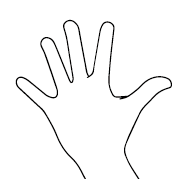TSL | Taiwan Sing Language Gleaning
Concurrent events— Simultaneity in Taiwan Sign Language
Whereas spoken languages present events in a linear fashion—because a speaker can only pronounce one phoneme at a time—sign languages can make use of space to express more than one meaning units at a time. Two different signs can be simultaneously displayed by each hand at different positions. As a result, sign languages can be very lively. Using both hands, signers can indicate that two events are concurrent, or take place at the same time. E.g. The two grew up together (displaying two subjects and their actions at the same time). He is older than I (at the same time indicating I am younger than he)/ He holds a higher position than I (at the same time indicating I hold a lower position than he).The second example shows that when making comparisons, TSL presents both entities that are being compared, so that the audience see clearly the difference between the two. Comparison goes both ways: if he is older than I, then I am younger than he.In addition, two actions that take place at the same time are often expressed as one set of signs. For example, the sign for talking on the phone is created by combining making phone calls and talking.
Example sentence
- Lao Wang will come here later. I have called him.
- We grew up in Baihe. We are not real brothers but we are close.
- We have been close for a long time. We have been doing Tai Chi for more than 20 years. We met each other when we were doing Tai Chi. As time passed, we became closer and closer. People here know we are close like brothers.
- Come help me. I can make a phone call first and clap my hands and then you can tell him. He will understand and it is more efficient.
- This way to sign Keelung is a little bit weird. You should do it this way, meaning a port with a lot of rain. This is what I learned from Japanese sign language. It also includes the meanings of coast and port, which allows ships to go inside.










































































































